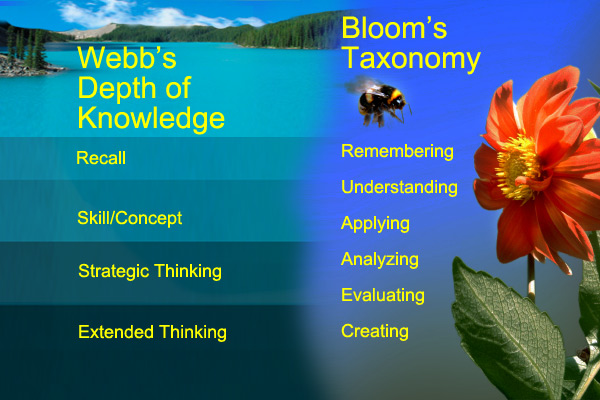Formative Instruction
Webb’s Depth of Knowledge can be used to measure the levels of knowledge that students can demonstrate on assessments. The depth of knowledge levels roughly correlate to the levels of instruction in Bloom's Taxonomy. This illustrates the direct connection between assessment and instruction.

Formative assessment allows a teacher to identify at what depth students know the subject. The teacher can then plan his or her instruction to meet each child where he or she is in the learning process. In this way the teacher can differentiate instruction so that struggling students can achieve academic success, while enabling students who are excelling have opportunities to continue to build upon what they are learning.
There are five critical elements to maximize the effects of formative assessment:
- Learning outcomes: It is critical for students to have learning goals and be aware of them. Clear learning objectives that utilize Bloom's Taxonomy will help them understand why they are learning the concepts.
- Learning progressions: These are the mile markers that students must meet before moving on with the instruction. For instance, if students do not understand a concept, the teacher will have to adjust his or her instruction, before teaching how to apply the concept or introducing additional concepts.
- Descriptive feedback: This informs students about what they have specifically learned and what they need to think about. Sometimes students become confused in one spot and lose the solution to the whole problem. With descriptive feedback, the teacher can step in with error correction and reinforcement until a student remembers, understands, or is able to apply the concept.
- Collaboration: When students work together, they have an opportunity to discuss what they are learning and answer questions with their partners or the group. Doing so encourages social engagement, influences academic engagement, and enables intellectual engagement.
- Self and Peer Assessment: Students are given an opportunity to diagnose their own progress as well as the learning progress of their group. This keeps students actively engaged and accountable for their learning, which further promotes social, academic, and intellectual engagement.
